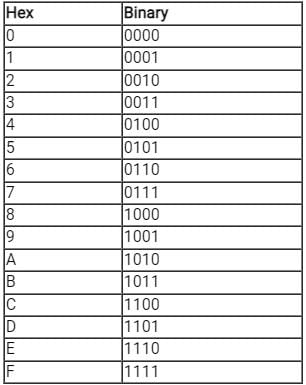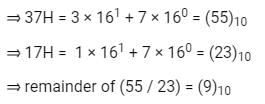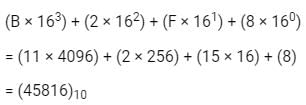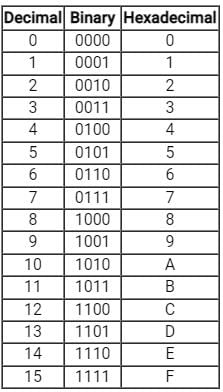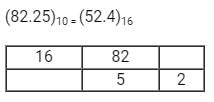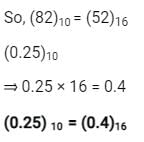Electrical Engineering (EE) Exam > Electrical Engineering (EE) Tests > Test: Hexadecimal Number System - Electrical Engineering (EE) MCQ
Test: Hexadecimal Number System - Electrical Engineering (EE) MCQ
Test Description
10 Questions MCQ Test - Test: Hexadecimal Number System
Test: Hexadecimal Number System for Electrical Engineering (EE) 2025 is part of Electrical Engineering (EE) preparation. The Test: Hexadecimal Number System questions and answers have been prepared
according to the Electrical Engineering (EE) exam syllabus.The Test: Hexadecimal Number System MCQs are made for Electrical Engineering (EE) 2025 Exam.
Find important definitions, questions, notes, meanings, examples, exercises, MCQs and online tests for Test: Hexadecimal Number System below.
Solutions of Test: Hexadecimal Number System questions in English are available as part of our course for Electrical Engineering (EE) & Test: Hexadecimal Number System solutions in
Hindi for Electrical Engineering (EE) course.
Download more important topics, notes, lectures and mock test series for Electrical Engineering (EE) Exam by signing up for free. Attempt Test: Hexadecimal Number System | 10 questions in 30 minutes | Mock test for Electrical Engineering (EE) preparation | Free important questions MCQ to study for Electrical Engineering (EE) Exam | Download free PDF with solutions
Test: Hexadecimal Number System - Question 1
The logic XOR operation of (4AC0)16 and (B53F)16 results________
Detailed Solution for Test: Hexadecimal Number System - Question 1
Test: Hexadecimal Number System - Question 2
When the value 37H is divided by 17H, the remainder is
Detailed Solution for Test: Hexadecimal Number System - Question 2
Test: Hexadecimal Number System - Question 3
Decimal equivalent of Hexadecimal number (C3B1)16 is
Detailed Solution for Test: Hexadecimal Number System - Question 3
Test: Hexadecimal Number System - Question 4
(B2F8)16 = (?)10
What should come in the place of question mark?
Detailed Solution for Test: Hexadecimal Number System - Question 4
Test: Hexadecimal Number System - Question 5
Which of the following is not a valid hexadecimal number?
Detailed Solution for Test: Hexadecimal Number System - Question 5
Detailed Solution for Test: Hexadecimal Number System - Question 6
Detailed Solution for Test: Hexadecimal Number System - Question 7
Detailed Solution for Test: Hexadecimal Number System - Question 8
Detailed Solution for Test: Hexadecimal Number System - Question 9
Detailed Solution for Test: Hexadecimal Number System - Question 10
Information about Test: Hexadecimal Number System Page
In this test you can find the Exam questions for Test: Hexadecimal Number System solved & explained in the simplest way possible.
Besides giving Questions and answers for Test: Hexadecimal Number System, EduRev gives you an ample number of Online tests for practice
Download as PDF




